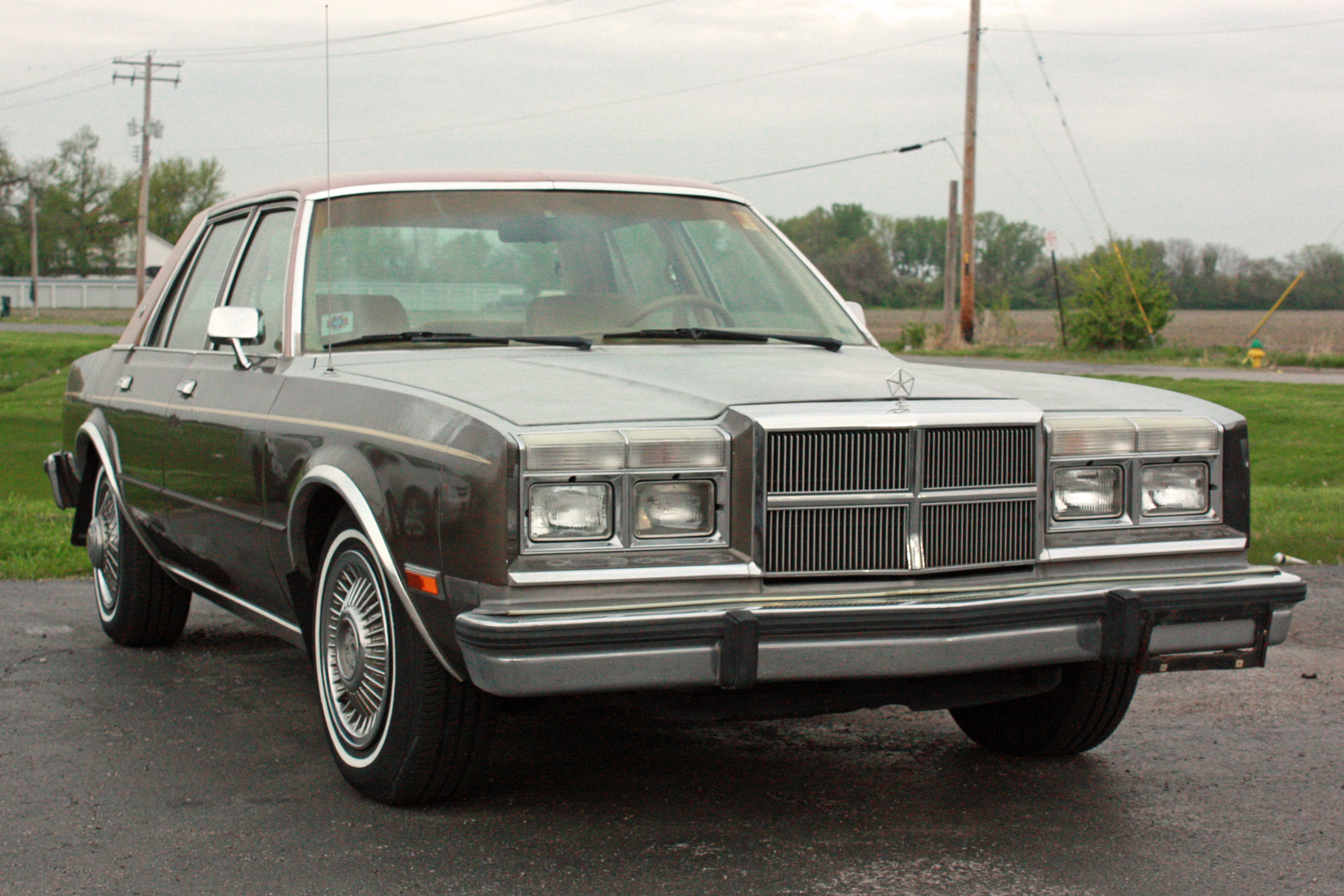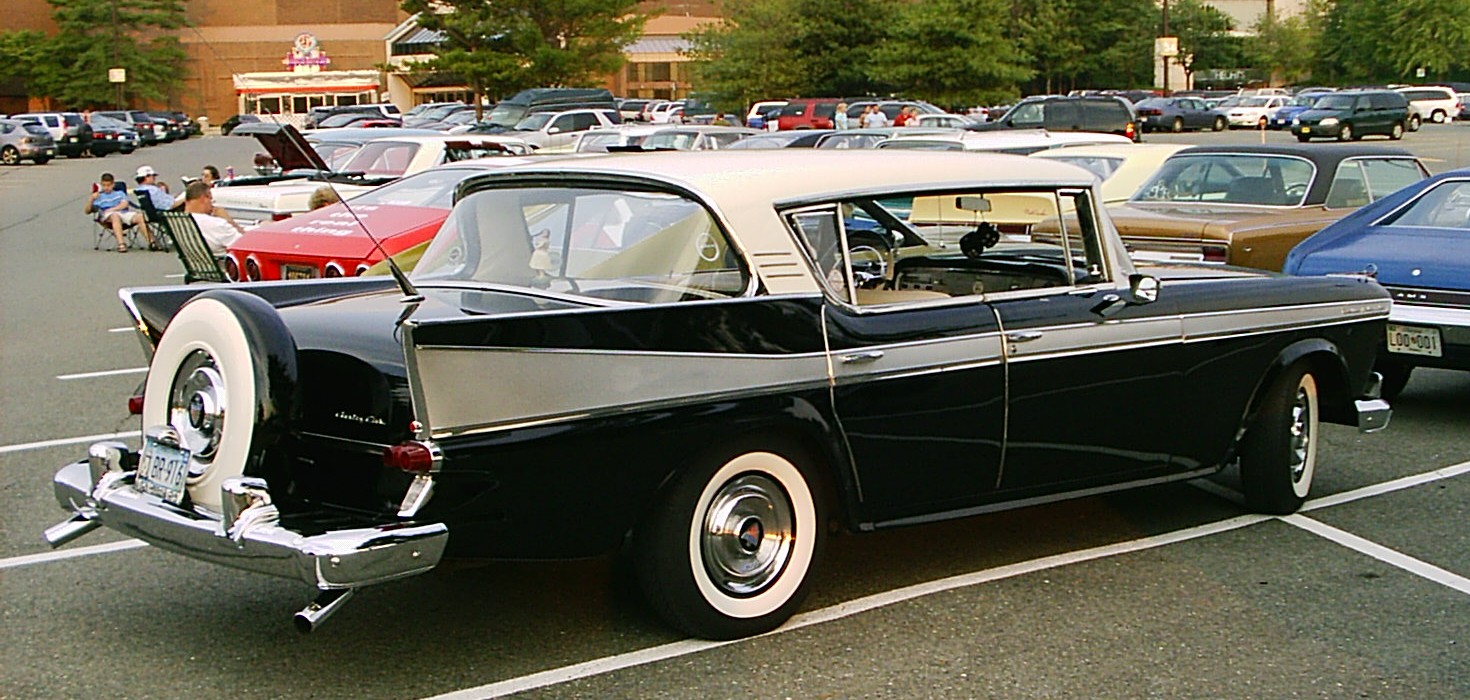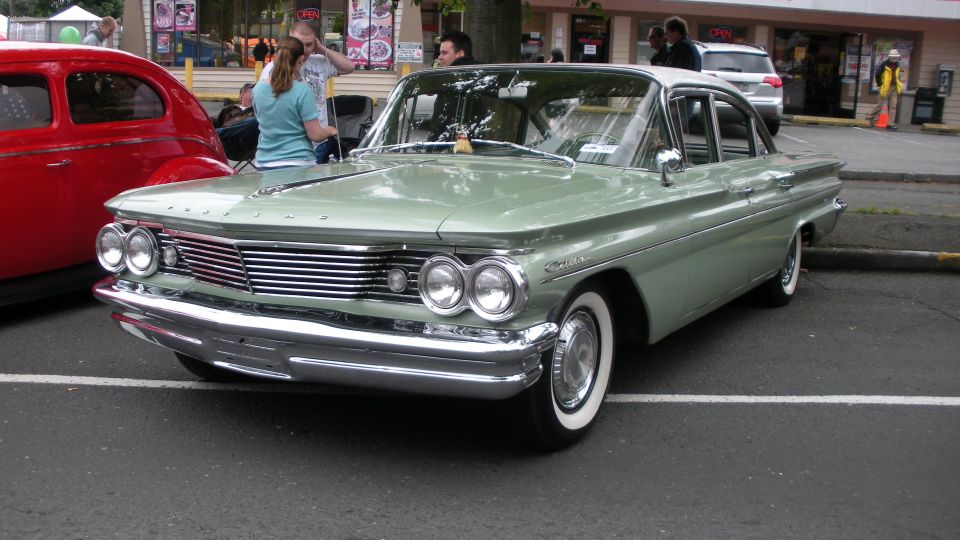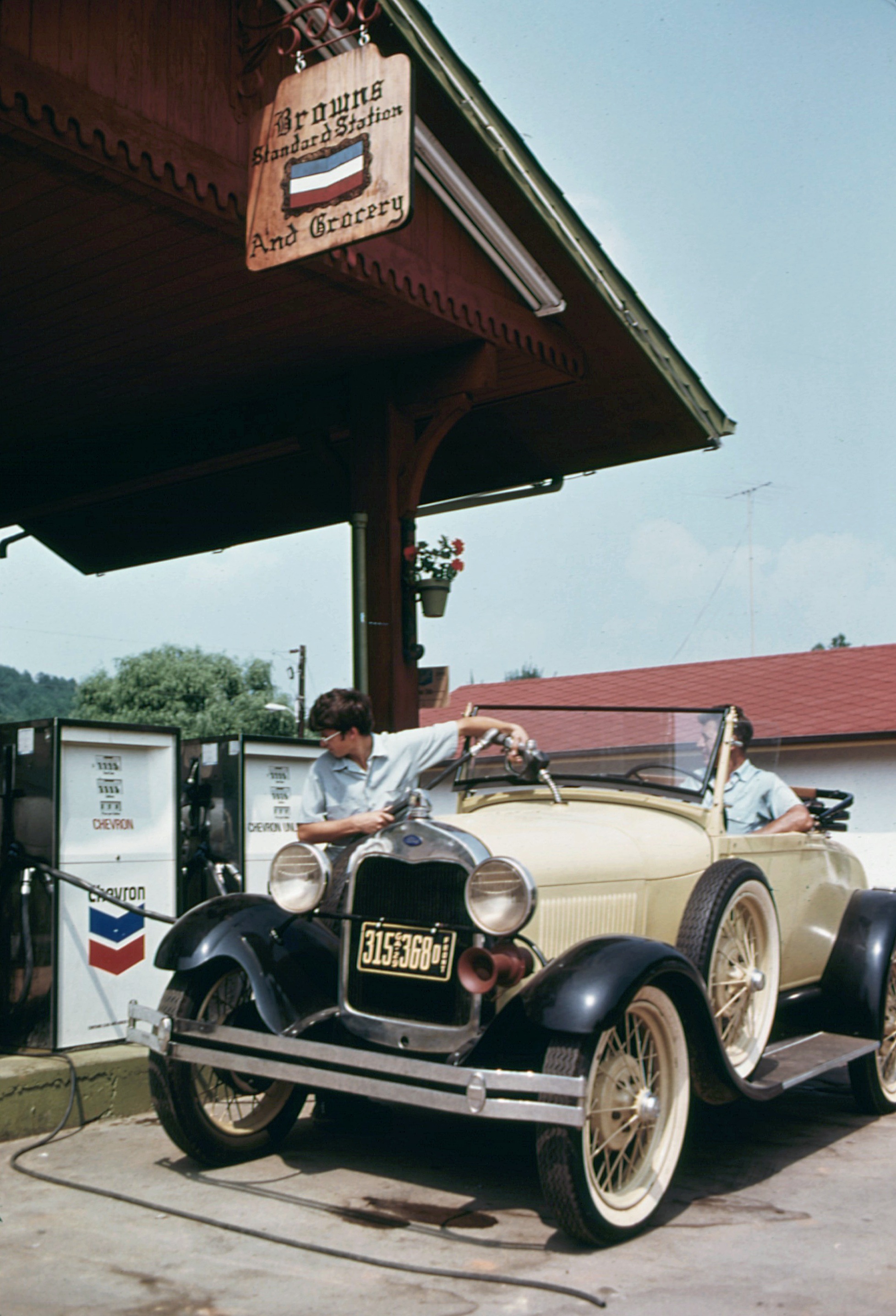|
Hardtop
A hardtop is a rigid form of automobile roof, which for modern cars is typically constructed from metal. A hardtop roof can be either fixed (i.e. not removable), detachable for separate storing or retractable within the vehicle itself. The '' pillarless hardtop'' (often referred to as simply "hardtop") is a body style of cars without a B-pillar, which are often styled to give the appearance of a convertible design. Pillarless hardtops The pillarless hardtop (abbreviated as "hardtop") is a post-World War II car body designed with no center or B-pillar styled to resemble a convertible. If window frames are present, they are designed to retract with the glass when lowered. This creates an impression of uninterrupted glass along the side of the car. Although having a rigid metal roof, the stylists sometimes make the "hardtop" cars appear to be like a convertible with its top up. Even the smaller automakers like Packard introduced two door hardtops in 1952 "as a resp ... [...More Info...] [...Related Items...] OR: [Wikipedia] [Google] [Baidu] |
Chrysler Newport
The Newport was a name used by Chrysler (division), Chrysler for both a hardtop body designation and also for its lowest priced model between 1961 and 1981. Chrysler first used the Newport name on a 1940 show car, of which five vehicles were produced. The Newport continued the tradition of a large, comfortable luxurious coupe and sedan, while offering a modestly priced product in comparison to the Chrysler New Yorker and Chrysler Imperial. The Newport gradually replaced the Chrysler Windsor which originally replaced the Chrysler Royal. The Newport was initially the brand name for the Windsor with a hardtop body style, then was used for coupes, sedans and station wagons in later decades. 1940s The first Newport, known as the Chrysler Newport Phaeton, was produced during 1940 and 1941. It was a dual-cowl Phaeton body, phaeton that used the Chrysler flathead engine#Straight-8, Chrysler Straight Eight "Spitfire" engine with dual carburetors coupled to a three-speed manual tra ... [...More Info...] [...Related Items...] OR: [Wikipedia] [Google] [Baidu] |
AMC Ambassador
The Ambassador is an automobile manufactured and marketed by American Motors Corporation (AMC) from 1957 through 1974 over eight generations, available in two- and four-door sedan, two-door hardtop, four-door station wagon as well as two-door convertible body styles. It was classified as a full-size car from 1957 through 1961, mid-size from 1962 until 1966, and again full-size from 1967 through 1974 model years. When discontinued, the ''Ambassador'' nameplate had been used from 1927 until 1974, the longest continuously-used car nameplate until then. The ''Ambassador'' nameplate was used variously as the Ambassador V-8 by Rambler, Rambler Ambassador, and finally AMC Ambassador. Previously, the nameplate Ambassador applied to Nash's full-size cars. The nameplate referred to a trim level between 1927 and 1931. Ambassadors were continuously manufactured at AMC's Lake Front plant in Kenosha, Wisconsin until 1974, as well as at AMC's Brampton Assembly in Brampton, Ontario between ... [...More Info...] [...Related Items...] OR: [Wikipedia] [Google] [Baidu] |
Oldsmobile 98
The Oldsmobile 98 (spelled Ninety-Eight from 1952 to 1991, and Ninety Eight from 1992 to 1996) is the full-size flagship model of Oldsmobile that was produced from 1940 until 1942, and then from 1946 to 1996. The name – reflecting a "Series 90" fitted with an 8-cylinder engine – first appeared in 1941 and was used again after American consumer automobile production resumed post-World War II. It was, as it would remain, the division's top-of-the-line model, with lesser Oldsmobiles having lower numbers such as the A-body 66 and 68, and the B-body 76 and 78. The Series 60 was retired in 1949, the same year the Oldsmobile 78 was replaced by the 88. The Oldsmobile 76 was retired after 1950. This left the two remaining number-names to carry on into the 1990s as the bread and butter of the full-size Oldsmobile lineup until the Eighty Eight-based Regency replaced the 98 in 1997. Occasionally additional nomenclature was used with the name, such as L/S and Holiday, and the ... [...More Info...] [...Related Items...] OR: [Wikipedia] [Google] [Baidu] |
Pontiac Catalina
The Pontiac Catalina is a full-size, junior series automobile produced by Pontiac from 1950 to 1981. Initially, the name was a trim line on hardtop body styles, first appearing in the 1950 Chieftain Eight and DeLuxe Eight lines. In 1959, it became a separate model as the "entry-level" full-size Pontiac. The Catalina was Pontiac's most popular model, available in multiple body styles, and served as the donor platform for the popular Pontiac Grand Prix, Pontiac 2+2, Pontiac Ventura, and the Pontiac Safari station wagon. When the Pontiac Tempest was introduced in 1964, lessons learned from the Catalina's introduction of the Grand Prix led to the introduction of the Pontiac GTO, to include the Pontiac V8. As a trim level (1950–1958) The name "Catalina" was first used on the 1950 Chieftain Series 25/27 hardtop, Pontiac's top trim level package at the time, and later added to the Star Chief in 1954, Pontiac's equivalent of the Chevrolet Bel Air. Originally referred to as ... [...More Info...] [...Related Items...] OR: [Wikipedia] [Google] [Baidu] |
Retractable Hardtop
A retractable hardtop — also known as "coupé convertible" or "coupé cabriolet" — is a car with an automatically operated, self-storing hardtop, as opposed to the folding textile-based roof used by traditional convertible cars. The benefits of improved climate control and security are traded off against increased mechanical complexity, cost, weight and often reduced luggage capacity. A 2006 ''New York Times'' article suggested the retractable hardtop may herald the demise of the textile-roofed convertible, and a 2007 ''Wall Street Journal'' article suggested "more and more convertibles are eschewing soft cloth tops in favor of sophisticated folding metal roofs, making them practical in all climates, year-round." History 1919 Ben P. Ellerbeck conceived a retractable hardtop – a manually operated system on a Hudson coupe that allowed unimpeded use of the rumble seat even with the top down – but never saw production. 1931 Georges Paulin made his idea public by applying ... [...More Info...] [...Related Items...] OR: [Wikipedia] [Google] [Baidu] |
Plymouth Belvedere
Plymouth Belvedere is a series of American automobile models made by Plymouth from 1954 until 1970. The Belvedere name was first used for a new hardtop body style in the Plymouth Cranbrook line for the 1951 model year. In 1954 the Belvedere replaced the Cranbrook as the top trim and became a full model line with sedans, station wagons, and convertible body styles. The Belvedere continued as Plymouth's full-sized car until 1965, when it became an intermediate, and was replaced after the 1970 model year by the Satellite, a name originally used for the top-trim level Belvederes. The nameplate " belvedere" is Italian for "beautiful sight" or “fair view”. Chrysler also had the Belvidere Assembly Plant in Belvidere, Illinois which began production in 1965. Cranbrook Belvedere 1951–1953 Introduced on March 31, the 1951 Plymouth Cranbrook Belvedere is a two-door pillarless hardtop. It was Plymouth's first such body design and was introduced in response to the 1950 Ch ... [...More Info...] [...Related Items...] OR: [Wikipedia] [Google] [Baidu] |
Cadillac Coupe De Ville
The Cadillac DeVille is the nameplate used by Cadillac over eight generations, originally used to designate a trim level of the 1949 Cadillac Series 62 and later to designate a standalone model in the brand range. The last model marketed specifically as a ''DeVille'' was the 2005 full-size sedan, at the time, Cadillac's largest model. For 2006, the ''Deville'' nameplate was retired, when the model line was carried forward (with minor revisions) as the Cadillac DTS, using a nomenclature adopted by the Cadillac STS and CTS. Early history The name "DeVille" is derived from the French ''de la ville'' or ''de ville'' meaning "of the town". In French coach building parlance, a coupé de ville, from the French ''couper'' (to cut) i.e. shorten or reduce, was a short four-wheeled closed carriage with an inside seat for two and an outside seat for the driver and this smaller vehicle was intended for use in the town or city (de ville). An (unshortened) limousine or (in the United S ... [...More Info...] [...Related Items...] OR: [Wikipedia] [Google] [Baidu] |
Cadillac Deville
The Cadillac DeVille is the nameplate used by Cadillac over eight generations, originally used to designate a trim level of the 1949 Cadillac Series 62 and later to designate a standalone model in the brand range. The last model marketed specifically as a ''DeVille'' was the 2005 full-size sedan, at the time, Cadillac's largest model. For 2006, the ''Deville'' nameplate was retired, when the model line was carried forward (with minor revisions) as the Cadillac DTS, using a nomenclature adopted by the Cadillac STS and CTS. Early history The name "DeVille" is derived from the French ''de la ville'' or ''de ville'' meaning "of the town". In French coach building parlance, a coupé de ville, from the French ''couper'' (to cut) i.e. shorten or reduce, was a short four-wheeled closed carriage with an inside seat for two and an outside seat for the driver and this smaller vehicle was intended for use in the town or city (de ville). An (unshortened) limousine or (in the United ... [...More Info...] [...Related Items...] OR: [Wikipedia] [Google] [Baidu] |
Convertible
A convertible or cabriolet () is a passenger car that can be driven with or without a roof in place. The methods of retracting and storing the roof vary among eras and manufacturers. A convertible car's design allows an open-air driving experience, with the ability to provide a roof when required. A potential drawback of convertibles is their reduced structural rigidity (requiring significant engineering and modification to counteract the effects of removing a car's roof). The majority of convertible roofs are of a folding construction framework with the actual top made from cloth or other fabric. Other types of convertible roofs include retractable hardtops (often constructed from metal or plastic) and detachable hardtops (where a metal or plastic roof is manually removed and often stored in the trunk). Terminology Other terms for convertibles include cabriolet, cabrio, drop top, drophead coupé, open two-seater, open top, rag top, soft top, spider, and spyder. Consisten ... [...More Info...] [...Related Items...] OR: [Wikipedia] [Google] [Baidu] |
Convertible
A convertible or cabriolet () is a passenger car that can be driven with or without a roof in place. The methods of retracting and storing the roof vary among eras and manufacturers. A convertible car's design allows an open-air driving experience, with the ability to provide a roof when required. A potential drawback of convertibles is their reduced structural rigidity (requiring significant engineering and modification to counteract the effects of removing a car's roof). The majority of convertible roofs are of a folding construction framework with the actual top made from cloth or other fabric. Other types of convertible roofs include retractable hardtops (often constructed from metal or plastic) and detachable hardtops (where a metal or plastic roof is manually removed and often stored in the trunk). Terminology Other terms for convertibles include cabriolet, cabrio, drop top, drophead coupé, open two-seater, open top, rag top, soft top, spider, and spyder. Consisten ... [...More Info...] [...Related Items...] OR: [Wikipedia] [Google] [Baidu] |
Dodge Phoenix
The Dodge Phoenix is an automobile which was produced by Chrysler Australia from 1960 to 1972. The Phoenix was introduced in May 1960 as an Australian assembled version of the American Dodge Dart,The Phoenix Retrieved from allpar.com on 12 September 2008 positioned above the locally developed as Chrysler Australia’s luxury model. It borrowed its name from the top Dart, the Dodge Dart Phoenix, but unlike its American namesake it was offered only as a four-door sedan and only with a 318 cubic inch V8 ... [...More Info...] [...Related Items...] OR: [Wikipedia] [Google] [Baidu] |
Packard
Packard or Packard Motor Car Company was an American luxury automobile company located in Detroit, Michigan. The first Packard automobiles were produced in 1899, and the last Packards were built in South Bend, Indiana in 1958. One of the "Three Ps" alongside Peerless Motor Company, and Pierce-Arrowthe company was known for building high-quality luxury automobiles before World War II. Owning a Packard was considered prestigious, and surviving examples are found in museums, car shows, and automobile collections. Packard vehicles featured innovations, including the modern steering wheel, air-conditioning in a passenger car, and one of the first production 12-cylinder engines, adapted from developing the Liberty L-12 engine used during World War I to power warplanes. During World War II, Packard produced 55,523 units of the two-stage/two-speed supercharger equipped Merlin V-12s engines under contract with Rolls-Royce. Packard also made the versions of the Liberty L-12 V-1 ... [...More Info...] [...Related Items...] OR: [Wikipedia] [Google] [Baidu] |


.jpg)

.jpg)

.jpg)



